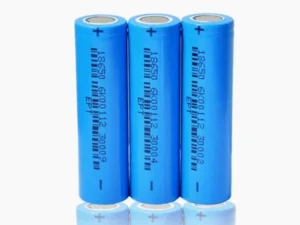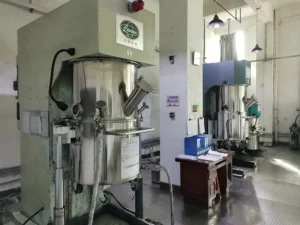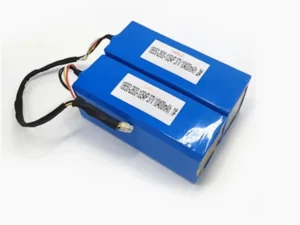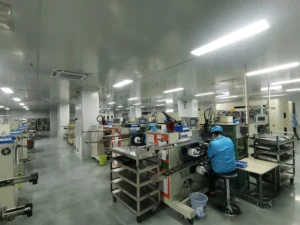Introduction:
You might find a lithium-ion battery commonly. The battery comes under the category of rechargeable batteries. You will see many electronics contain these batteries. The basic phenomenon of its working state is that ions flow from the negative terminal to the positive terminal when the battery discharges. The same process reverses when the battery charges up. Let’s now jump to the lithium ion battery manufacturing process.
How are lithium batteries made by manufacturers?

The lithium ion battery manufacturing process consists of four major components or parts. It includes an anode, cathode, separator, and electrolyte. If you compare the anode and cathode, then the anode is negatively charged and comes in graphite material. At the same time, the cathode is positively charged and comes in alloy material. To begin with the procedure, we have divided it into some parts. We are starting with the lithium battery manufacturing process for electrodes first.
Lithium ion battery manufacturing process for electrodes

For the lithium battery manufacturing of the electrodes, the manufacturers separately treat the anode and cathode. They add a binding substance to mix with the electrodes. It then forms an even mixture that comes in a perfect slurry. After that, they spread this mixture on the anode and cathode with the help of a machine. For the anode, aluminum foil behaves as current collecting material.
Similarly, copper foil is the material for the current collection for the cathode. By using the machine for spreading the material, they can control the amount of coating to apply on the electrode. They take these to the drying unit, where they dry out the wet substance coating. Then, they take it to the calendaring step. It is where they press the aluminum and copper foils with the help of heavy rolling machines. Afterward, in lithium battery manufacturing, they take it to the next process, called slitting. The electrodes then get split into thinner pieces. Also, they suck all the moisture from it in the lithium ion battery production.
Process of joining the cells together
In the previous step of lithium battery manufacturing, manufacturers dried the electrodes and evaporated their excess moisture content. Next, they place a separator in between both the anode and cathode. Usually, they follow two distinctive assembling ways for the types of cells. For example, if they have pouch-type cells, then they follow the way of stacking. Otherwise, they choose a winding method if they get cylindrical or its type cells. Here, the cell structure is almost complete.
Joining the cell structure with the terminals is a very careful and precautionary measure. What they do is they use the technique of winding from the laser. Next, they focus on the outer case or structure completely. They place the semi-assembled structure in a case depending upon whatsoever type they are manufacturing. Therefore, they use a laser technique to seal off it. Now, they fill the electrolyte solution and the structure of the cell. Further, they test the batteries for the output in lithium battery production.
Giving cells the final touches
The lithium battery production process indicates the actual demonstration of the cells. The charging and discharging process begins as soon as the electrolyte enters it. It requires minimum voltage and current for operation. They might even have to perform tests to check the conductivity of the battery.
Li-ion battery pack manufacturing process

Before getting into the li-ion battery pack manufacturing process, it is necessary to understand its usage. A Li-ion battery pack has the purpose of storing energy. You will see these installed in vehicles, solar panels, electronics like mobiles and laptops, etc. Once the user charges it or can use it for an extended period, the battery won’t drain soon. Hoping that it gave the solution for how are lithium ion batteries made.
Manufacturing process

The Li-ion battery pack manufacturing process includes multiple components. For example, you will see many electrodes and electrolytes in it. The pack comes in multiple batteries assembled. For designing and producing a battery pack, manufacturers always require specifications. The basic components required are the configuration of cells and a model structure.
Nearly the process of how lithium ion batteries are made is the same. The only difference lies in the number of batteries joined in a structured manner. Instead of manufacturing a single battery, the frame or structure consists of a greater number.
Designing the structure of the battery pack
The manufacturers design it with specifications for their usage. Sometimes, they add a single layer of battery winded together to form a pack. The stack of batteries is custom designed. Thus, they can increase or decrease the number. Plus, the formatting of its assembly also plays a crucial role in the lithium ion battery manufacturing process.
Configuration of the batteries
1. Cylindrical pack
In the process of lithium battery manufacturing, the manufacturers produce cylinder-shaped cells. They add custom operating capabilities according to their requirements. It gets widely used in toys and other small electronics.
2. Prismatic type
Laptop makers use these cells in laptops. You can use a prismatic configuration to generate more battery for long hours. Thus, it carries a great volume of lithium.
3. Pouch type
As its name suggests, the li ion battery manufacturing process produces it like pouches. Users use it quite conveniently because of its flexibility usage. With a unique design, it becomes a powerful battery compared to the others.
Conclusion:
The lithium ion battery manufacturing process is very simple to understand. With the help of the latest and modern tools and equipment, manufacturing is now simpler and easier. Hence, we hope your query about how is a lithium battery made is solved now.
